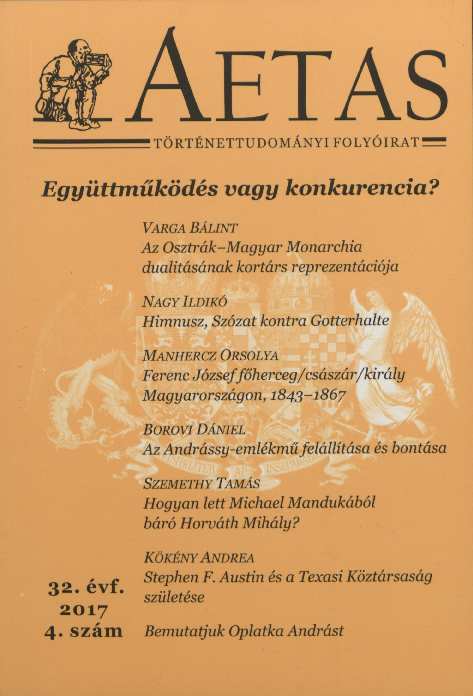Ferenc József főherceg/császár/király Magyarországon, 1843–1867
Archduke/emperor/king Franz Joseph in Hungary, 1843–1867
Author(s): Orsolya ManherczSubject(s): 19th Century
Published by: AETAS Könyv- és Lapkiadó Egyesület
Summary/Abstract: Franz Joseph first visited Hungary as an archduke, later as emperor, and after the AustroHungarian Compromise as king. How did the young archduke; the stark, soldierly emperor; and the king ready to compromise appear before his Hungarian "subjects"? Who did he support or oppose? How did these visits change the image of the archduke/ruler? In this study we are examining Franz Joseph's changing image in Hungary between 1843 and 1867. Before December 1848, the Hungarian public got to know him as a healthy, young archduke and a promising young man. Starting from 1849, he came to the country as a military leader and a victorious conqueror, and a few years later as a Catholic ruler. In 1857, he introduced himself to his Hungarian "subjects" as a husband and father. Only in the 1860s did he visit Hungary as king, which happened even before the Compromise and his coronation. In general, Franz Joseph's travels in the 1850s were primarily characterized by an emphasis on representation as opposed to politics, however, this tendency turned around at the middle of the 1860s. The events of 1865-1866 were not only turning points in terms of politics, but in symbolic politics as well, since in these years the methods of symbolic politics were used to complement real political action, not to replace it.
Journal: AETAS - Történettudományi folyóirat
- Issue Year: 2017
- Issue No: 4
- Page Range: 98-110
- Page Count: 13
- Language: Hungarian

